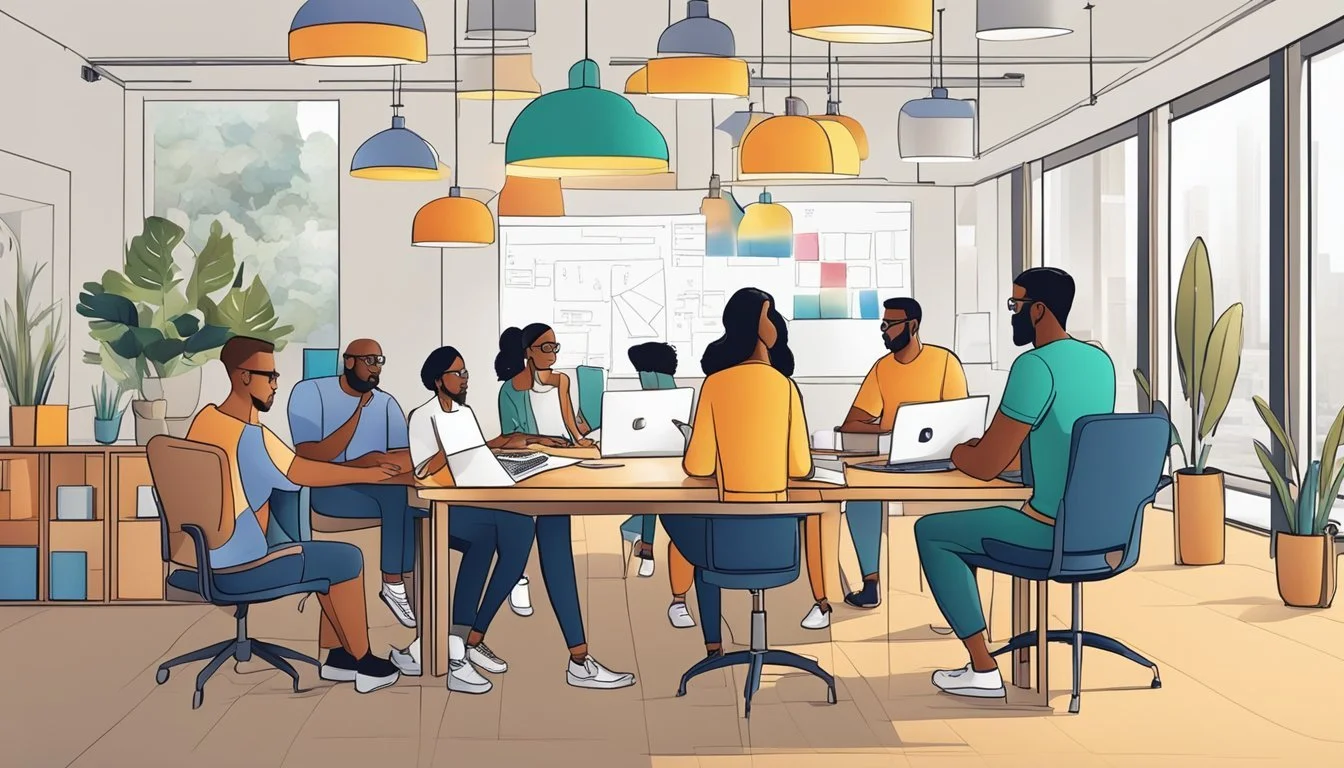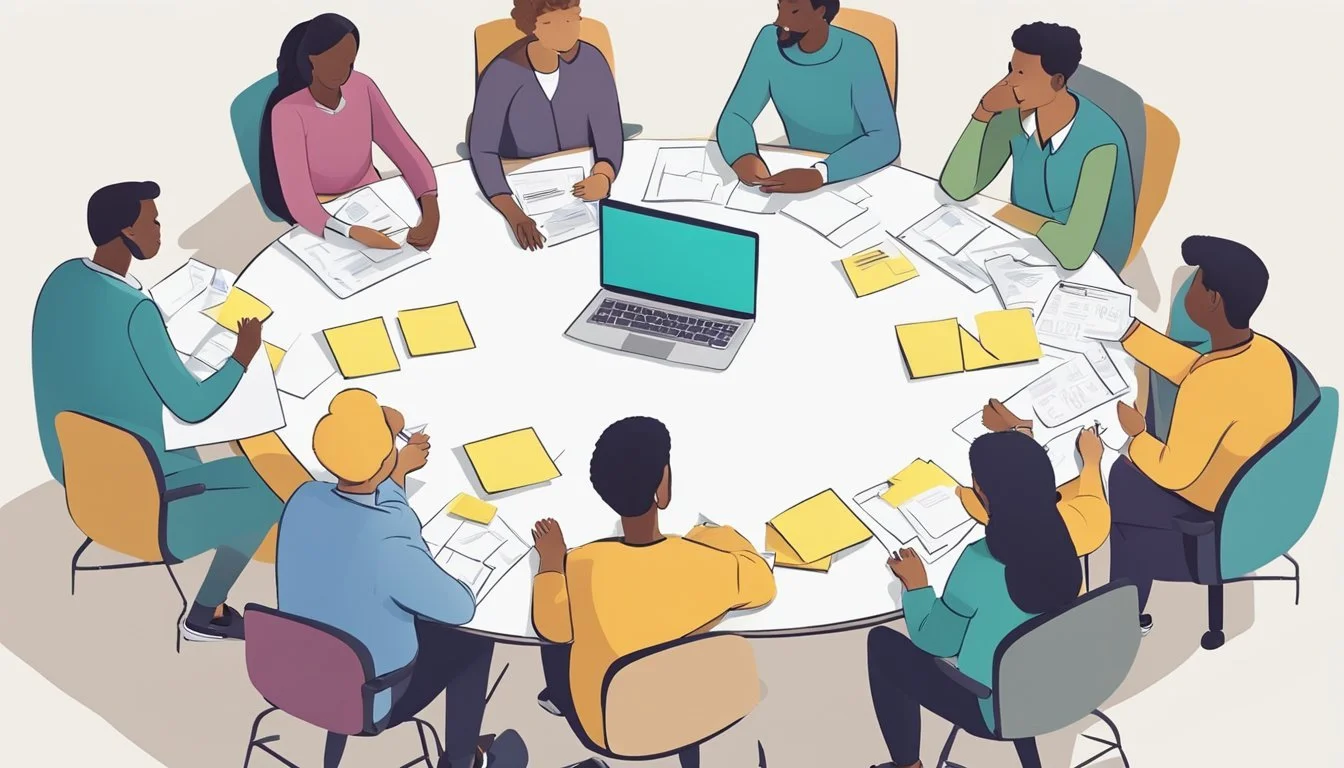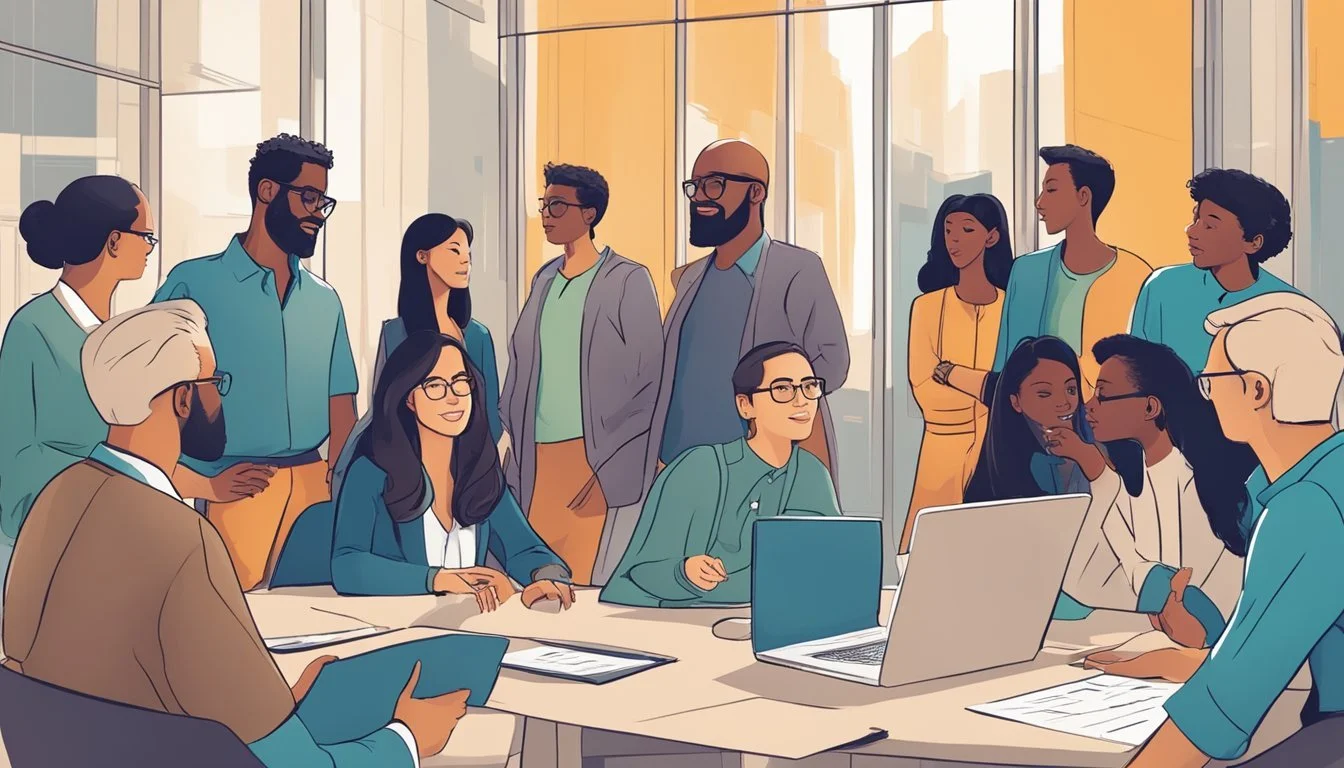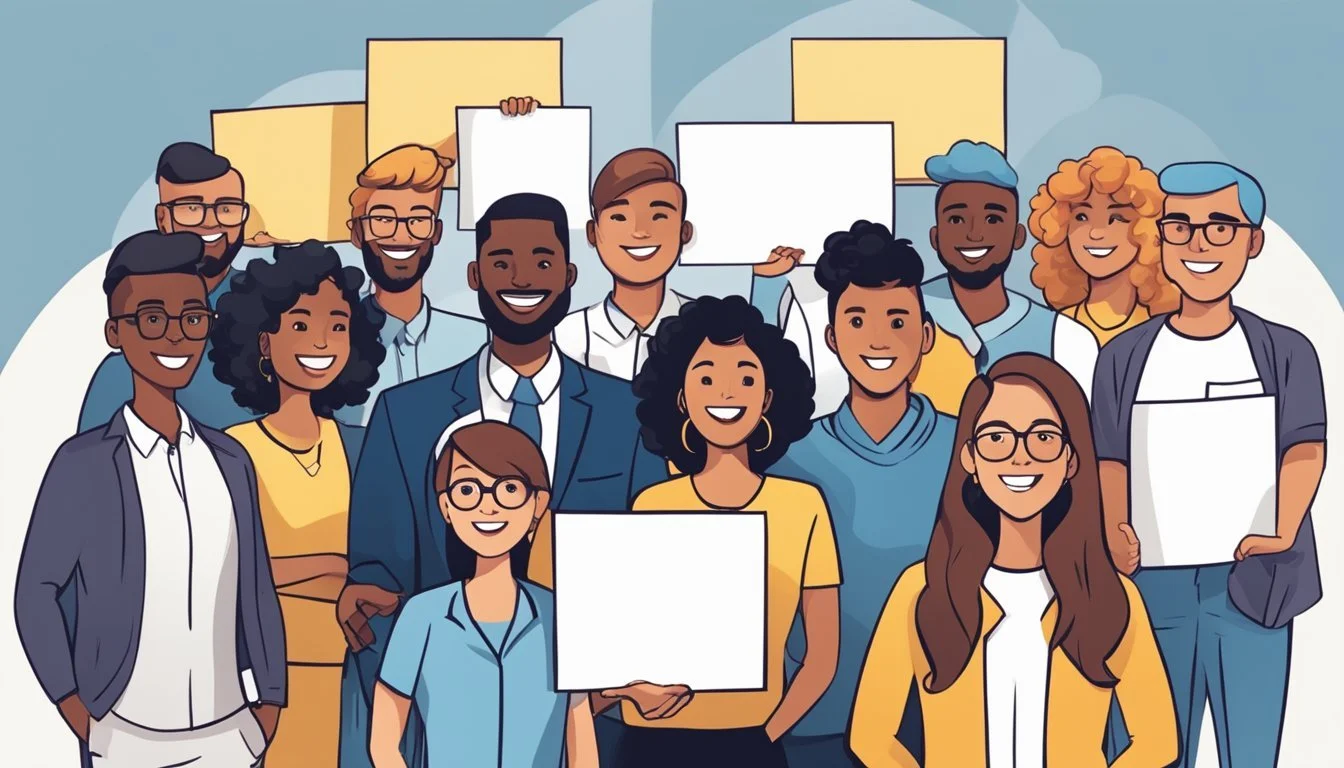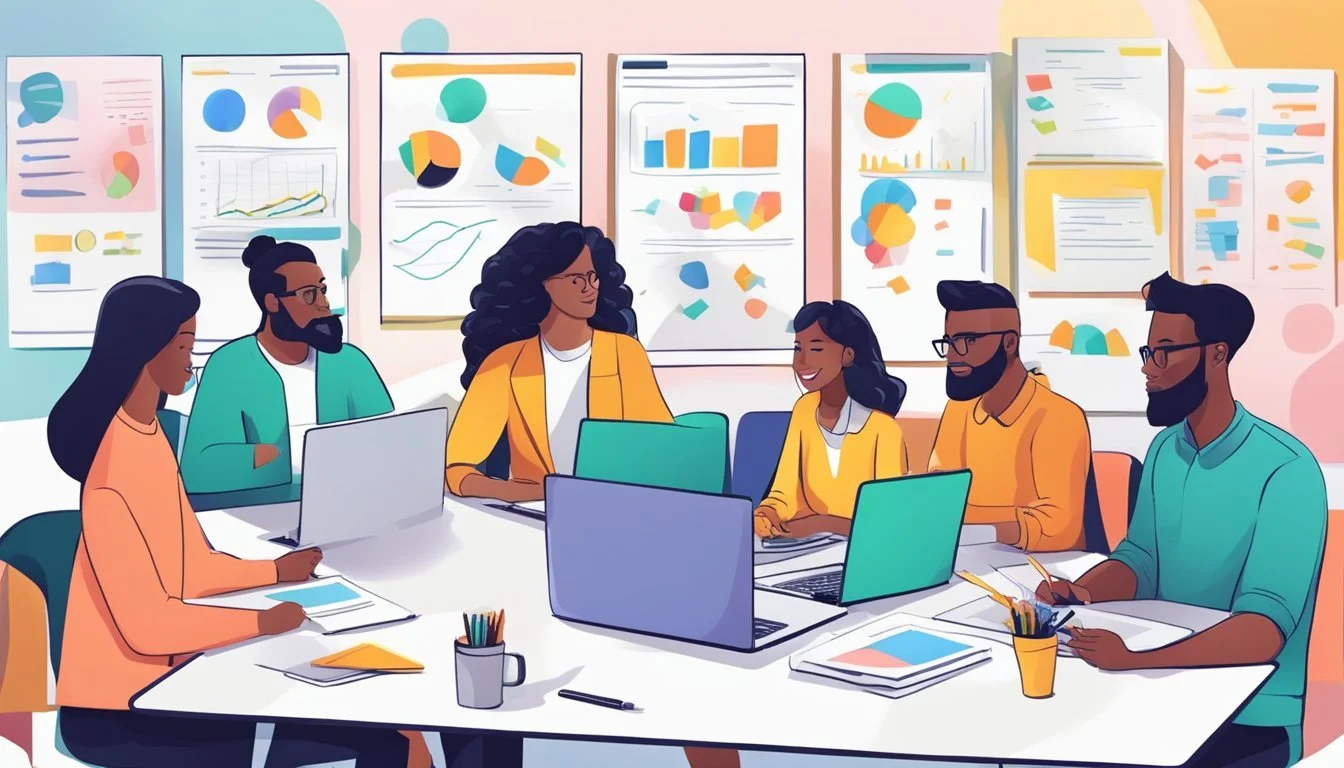13 Signs You're a Highly Collaborative Team Player
Key Traits and Behaviors
In today’s dynamic work environment, being a collaborative team player is more crucial than ever. This article explores the key traits that indicate a person's ability to work effectively within a team. Identifying these signs can provide valuable insights for both employees and employers aiming for a more cohesive and productive workplace.
The ability to collaborate seamlessly not only enhances personal growth but also significantly contributes to the success of an organization. By fostering strong relationships and open communication, highly collaborative team players create an environment where ideas can flourish and goals are more easily achieved.
1) You Actively Seek Input from Others
Team players who actively seek input from others understand the value of diverse perspectives. They go beyond their own ideas, inviting colleagues to share thoughts and suggestions, fostering a more inclusive environment.
Seeking input demonstrates respect for teammates' expertise. It shows a commitment to collaborative problem-solving and ensures that multiple viewpoints are considered before making decisions.
By encouraging open communication, they enhance team dynamics and improve overall productivity. Open forums for discussion, such as team meetings or collaborative platforms, are often utilized to gather feedback effectively.
When team members feel their contributions are valued, they are more likely to engage actively. This engagement builds trust and strengthens relationships within the team.
An effective approach includes asking specific questions and being genuinely curious about others' insights. This method helps in uncovering innovative solutions and avoids potential blind spots.
Besides improving the quality of outcomes, seeking input from others makes the process more democratic and less hierarchical. It empowers all team members to voice their opinions, leading to a more cohesive and resilient team.
For more information on qualities of effective team players, see insights on developing a collaborative workplace culture.
2) You easily find common ground with team members
A highly collaborative team player can quickly identify common ground with colleagues. This ability helps build rapport and trust among team members, facilitating smoother communication and cooperation.
They ask open-ended questions and actively listen to responses. This approach helps uncover shared interests and values, making it easier to connect on a personal and professional level.
They also use inclusive language and gestures. This practice promotes a sense of belonging and partnership, essential for effective teamwork. Sharing personal experiences can further strengthen these connections.
Encouraging empathetic communication is another key trait. Teams are more likely to find common ground and resolve differences when they understand each other's perspectives. This includes mediating conflicts when they arise.
Well-established commonalities pave the way for more efficient goal alignment. A team that shares values and objectives is typically more cohesive and productive. This is vital for achieving collective success on projects.
Regularly highlighting shared goals and values can reinforce this sense of unity. By doing so, they ensure that team members remain focused and motivated. This contributes to a more harmonious and dynamic working environment.
In essence, finding common ground is an essential skill for any collaborative team player. It fosters mutual respect and understanding, which are cornerstones of effective teamwork.
3) You're Open to Feedback and Act on It
Being open to feedback is a crucial trait of a collaborative team player. Individuals who embrace feedback demonstrate their willingness to learn and grow. This openness showcases a commitment to improving interpersonal skills and overall performance.
Acting on feedback is equally important. It shows that individuals are not just listening but taking actionable steps to better themselves. This attitude fosters a positive team environment.
Creating a safe space for feedback can enhance team dynamics. By normalizing regular feedback, team members can communicate more effectively and address issues promptly. This can lead to increased productivity and cohesion within the team.
4) You effectively communicate project goals
Effectively communicating project goals is a critical trait of a collaborative team player. Team members need a clear understanding of objectives to work efficiently.
Effective communication involves concise and clear language. Ambiguity can lead to misunderstandings and hinder progress. It's important to ensure that everyone is on the same page about the project's purpose.
Regular updates are vital. Keeping the team informed about milestones and any changes to the project goals helps maintain focus and alignment.
Listening is key. Encouraging feedback and questions can clarify any misconceptions and foster a healthy dialogue.
Using various communication tools can streamline this process. Email summaries, instant messaging, and regular meetings can help in reaching everyone effectively.
Consistency in communication builds trust within the team. Knowing when and how to share information can make a significant difference in team dynamics and project success.
Following these practices ensures that the team stays aligned and motivated towards achieving the project's goals. For more on effective communication strategies, check out these guidelines.
5) You respect different perspectives
Respecting different perspectives is crucial for effective collaboration. A team player acknowledges that team members come from diverse backgrounds, bringing unique experiences and viewpoints.
They listen actively to opinions that differ from their own. This attentiveness creates a more inclusive environment where everyone feels valued and heard.
Recognizing the strengths in diverse thoughts fosters innovation. Different perspectives can offer new solutions and strategies that may not have been considered initially. This ability to embrace various viewpoints can lead to more comprehensive decision-making.
Team players who respect differing ideas also encourage open and honest communication. They understand that constructive debates can lead to better outcomes for the team. This mindset helps in building a culture of trust and mutual respect.
Encouraging diverse perspectives also reduces groupthink, where the desire for consensus overrides realistic analysis. Team players recognize that balancing various viewpoints can enhance creativity and problem-solving within the team.
6) You share credit with your team
Sharing credit with your team is a hallmark of a truly collaborative team player. These individuals understand that achievements result from collective effort rather than just individual contributions.
When projects are successful, they acknowledge their teammates' roles. This acknowledgment boosts morale and encourages continued collaboration.
They ensure to highlight the efforts of others in meetings and reports. By doing so, they create an environment where every team member feels valued.
Team players resist the urge to claim the spotlight for themselves. Instead, they take pride in collective accomplishments, fostering a sense of unity.
This behavior helps build trust. When everyone knows their contributions will be recognized, they are more willing to invest their best efforts.
For organizations seeking to strengthen team dynamics, looking for members who naturally share credit can be crucial. These individuals help in cultivating a culture of respect, shared success, and mutual support.
7) You Manage Conflicts Constructively
A collaborative team player recognizes that conflict is inevitable but can be managed constructively. They do not shy away from disagreements but engage in collaborative problem-solving.
By focusing on finding mutually beneficial solutions, they ensure all parties feel heard and respected.
They are also adept at observing subtle signs of conflict within the team. This can include noticing changes in body language, facial expressions, or tone of voice as per MindTools' insights.
Proactive in their approach, they address conflicts early before they escalate.
When handling disagreements, they encourage open communication and transparency. This helps in resolving the underlying issues rather than just addressing the symptoms.
Such individuals also help in facilitating a calmer environment by maintaining their own composure and setting a positive example for others. They may also utilize conflict resolution strategies to boost collaboration.
Their approach often leads to improved understanding and strengthened relationships among team members, fostering a more cohesive and efficient work environment.
8) You Encourage Team Participation
A highly collaborative team player actively promotes team participation. They understand that the collective effort of the team can lead to better results than individual contributions alone.
They invite all members to share their thoughts and ideas. This creates an environment where everyone feels valued and heard.
Encouraging team participation can involve asking open-ended questions during meetings. It can also mean providing opportunities for quieter team members to voice their opinions.
They also make sure that everyone feels comfortable sharing their ideas. This is crucial for creating an inclusive and productive team atmosphere.
A team player who fosters participation does not dominate conversations. Instead, they facilitate discussions, ensuring a balanced exchange of ideas.
They recognize and celebrate contributions from all team members. Highlighting everyone's input makes each team member feel important and boosts overall morale.
To foster participation, they might also organize team-building activities. These can help break down barriers and strengthen trust among team members.
For more tips on fostering a collaborative mindset, check out the 16 Qualities of a Team Player.
Encouraging participation is about creating a space where every team member feels confident to contribute, leading to more innovative solutions and a cohesive team dynamic.
9) You're flexible in your approach
A highly collaborative team player adapts easily to changing circumstances. They don’t cling to a single strategy but are open to trying different methods to achieve the team's goals.
Flexibility in approach involves being willing to take on different roles. One day they might lead a project, another day they might support someone else’s initiative.
They also possess a readiness to accept new ideas. Whether it’s a new tool or a different workflow, they readily embrace innovations that could benefit the team.
This adaptability extends to handling unexpected challenges. When unforeseen obstacles arise, a flexible team player remains calm and adjusts their plans without frustration.
Being flexible also means being able to negotiate and compromise. They understand that sometimes giving way on certain aspects can help the team move forward more effectively.
An example of this quality is found in someone who can switch tasks with ease. If a colleague is swamped, they quickly jump in to lend a hand, even if the task is outside their usual responsibilities.
Flexibility is crucial when things don’t go as planned. They’re quick to reassess the situation, consider alternatives, and pivot accordingly.
Adaptable team players thrive in dynamic environments. They enjoy the challenge of navigating through change and see it as an opportunity for growth.
10) You support teammates in their work
A highly collaborative team player always supports their teammates in accomplishing their tasks. This includes being available to help with challenging projects or providing resources. They understand that collective success is built on individual contributions.
Actively offering assistance when someone seems overwhelmed demonstrates empathy and a strong sense of responsibility. It helps maintain the team's productivity and morale.
Effective communication ensures that everyone knows they can count on each other. Checking in regularly with teammates to ask if they need help fosters a supportive environment. Encouraging peer collaboration not only helps the team achieve its goals, but also strengthens the bonds between team members.
When team members feel supported, they are more likely to perform well and experience job satisfaction. Being willing to share knowledge and expertise freely is a hallmark of this supportive behavior.
On top of that, celebrating others' successes, big or small, contributes to a positive team culture. Recognition of effort and achievements can motivate the entire team and build mutual respect.
It's essential to create an atmosphere where everyone feels valued and supported. This ultimately leads to better collaboration and success for the team.
11) You contribute to a positive team environment
Fairness and clarity of purpose play vital roles in a positive team environment. A team player ensures that everyone understands the objectives and feels valued. This approach enhances employee loyalty and job contentment.
Engaging with team members is crucial. They listen to others' ideas and offer constructive feedback. These actions create a supportive and inclusive atmosphere.
Respecting diversity within the team is another important aspect. Acknowledging different perspectives and ideas fosters creativity and innovation. Recognizing each member's unique contributions helps in building a dynamic and collaborative team.
Effective communication is essential. It goes beyond speaking clearly and involves actively listening. A team player ensures that information flows smoothly and misunderstandings are minimized.
Management support is also a key factor. Encouraging open communication and addressing concerns promptly helps in creating a trustful environment. Team members feel more secure and motivated to contribute their best.
12) You're dependable and consistent
A team player who is dependable and consistent completes tasks on time and meets expectations.
They show up prepared, follow through on commitments, and contribute to the team's goals without needing constant supervision. This reliability builds trust among team members and ensures smooth workflow.
When challenges arise, dependable individuals remain steady, helping the team stay focused and effective. They provide support to their teammates, making sure that collaborative projects don’t falter due to inconsistencies.
Colleagues know they can count on these team players to deliver quality work consistently. This predictability minimizes stress and confusion within the team, fostering a more productive and harmonious workplace environment.
A dependable team player also maintains a level of professionalism that sets a positive example. Their consistency in actions and outputs strengthens the team’s overall performance, aligning with organizational goals and standards.
13) You prioritize team success over individual wins
A hallmark of a collaborative team player is their dedication to collective goals. They understand that the success of the team far outweighs personal achievements. Prioritizing team success creates an inclusive environment where collaboration flourishes.
They often share credit with team members, recognizing everyone’s contributions. This approach not only builds morale but also fosters trust and mutual respect within the team.
Such individuals are less likely to indulge in actions that solely boost their own profiles. Instead, they focus on activities that benefit the entire group. This mindset helps in maintaining a unified direction towards common objectives.
They willingly step out of their comfort zones to support colleagues in need. Whether it’s staying late for a project or lending expertise, their actions are consistently geared towards enhancing team performance.
Their commitment to collective success can significantly drive the team’s motivation and productivity. This selflessness makes them invaluable assets, as they encourage a culture of collaboration and mutual assistance. Their actions exemplify true teamwork.
Understanding Collaborative Team Players
Collaborative team players are essential for achieving synergy within a team. They bring specific qualities and behaviors that enhance teamwork and drive better outcomes.
What Is a Collaborative Team Player?
A collaborative team player actively participates in group activities with the goal of contributing to the team's success. They focus on combining their skills and knowledge with those of their teammates to achieve common objectives. This person values collective input and strives to build on the ideas and strengths of others.
They are not just focused on their own success but are dedicated to the team's goals. Their approach fosters an environment where open communication and mutual respect thrive. This type of player ensures that everyone’s insights are considered, leading to more well-rounded and effective solutions.
Key Characteristics of Collaborative Team Players
Effective Communication: Collaborative team players excel at both speaking and listening. They ensure clear and concise communication and actively listen to understand their teammates' perspectives.
Open-Mindedness: They are open to new ideas and willing to consider different viewpoints. This flexibility helps in finding innovative solutions.
Reliability: Trustworthiness and dependability are crucial. These team players consistently meet deadlines and commitments, ensuring the team's progress is not hindered.
Positive Attitude: Maintaining a positive and encouraging demeanor helps boost team morale. They approach challenges with optimism and resilience.
Empathy: Understanding and respecting colleagues' emotions and viewpoints create a supportive team atmosphere. Empathetic team players can mediate conflicts and foster harmony.
These characteristics collectively contribute to a work environment that is productive, cohesive, and adaptive.
The Benefits of Being Highly Collaborative
Highly collaborative team players bring significant advantages to any workplace. Their contributions often lead to improved team morale and an increase in innovation and creativity among team members.
Enhanced Team Morale
Collaborative individuals often foster a positive and inclusive work environment. They actively engage with their team, which helps to build trust and rapport among colleagues. This sense of camaraderie can lead to higher job satisfaction and lower turnover rates.
Open communication is another key aspect. When team members feel heard and valued, their morale naturally improves. A Harvard Business Review study showed that employees who collaborate more frequently report higher job satisfaction and are more likely to stay with their company.
Furthermore, collaborative environments reduce work-related stress. By sharing responsibilities and supporting each other, team members can manage workloads more efficiently, leading to a healthier work-life balance.
Increased Innovation and Creativity
Collaboration brings diverse perspectives to the table. When team members with different backgrounds and skills work together, they generate unique and creative solutions to problems that might be missed by individuals working alone.
Encouraging an open exchange of ideas helps spark innovation. For instance, brainstorming sessions can become more productive when team members build on each other's ideas. This collective thinking process often leads to breakthroughs that drive the company forward.
Additionally, studies suggest that workplaces with high levels of collaboration, like those mentioned by Deloitte, see a 60% increase in innovative practices. This is because collaboration creates an environment where employees feel comfortable sharing bold ideas without fear of criticism.


